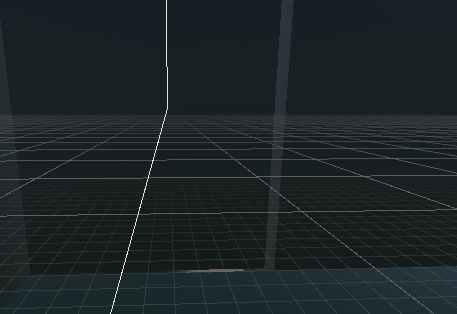Post Mortem: DnD Map v1
DnD, and explicitly simplified DnD is uniquely within my wheelhouse. I enjoy tabletop games and dislike rules heavy systems, so I looked forward to using a rules-lite system. I followed the five room dungeon model for this assignment; since I believe it can effectively communicate a dramatic arc and pack typical DnD challenges in a very small amount of content. I assembled the map using a small node graph to indicate where rooms connect, then built the map in Roll20 proper with a page of notes to the side to help me direct the game. Grant and Nathan were my players for this, with Grant playing a wizard and Nathan playing a ranger; giving them both access to magic and range attacks.
Magic was key to problem solving within the level itself. Grant used his ‘Float’ spell as a way to functionally move hazardous items out of the way; while not available in the rules as written, I realized that if he was to describe physically moving an object, I’d ask him to make a rule indistinguishable from jumping (d6 + str versus a penalty to equal the amount of squares he could move an object); so Float might as well be used under the same situation. I was happy to have created puzzles that were open ended enough to be solved with methods that surprised me, yet made logical sense. Additionally, allowing him to use the spell like this encouraged him to find additional uses for it, which I feel made it a successful tutorial dungeon; he saw the utility of his abilities, got excited about it, and was interested in finding more use cases for it. Whether he was safely moving burning objects to smoke out hives of carnivorous insects, or floating a corpse over to move a hungry swarm out of the path of progress, the group quickly found the utility in moving things you don’t necessarily want to touch. Nathan was also curious about the utility of his abilities, and thought about using his arrows to distract enemies or dousing them in fuel to set fire to stubborn foes.
However, I feel like I rambled too much, and spent time describing details that were unnecessary to the play experience, which caused me to go over the required time limit; the players were just wrapping up the boss encounter when time was called. More practice and refining what details I need to call out will be necessary to trim down total playtime. I also feel as if the map is too linear and only presents the illusion of choice. Players solve the entrance puzzle, go into one of two rooms to acquire fuel and a heat source, use that to burn a path to the boss, then possibly use the fire to torch the boss and his congregation. This means the smaller rewards are functionally similar to each other, and I can’t help but shake the feeling of railroading through ‘Quantum Ogres’; ensuring that players go through a required encounter no matter the path they take, giving the illusion of choice. I would try to remedy this by making the rewards from the side paths distinct from each other and making the side-path encounters fight differently.
On that note, combat was too easy and I feel like I pulled my punches a bit too hard, tutorial combat or not. If I have a low amount of active enemies on the map, I need to ensure they’re particularly tough to make up for their lack of actions compared to players. If I was to redo my map, I would buff the enemies, place them in much more perilous positions so that they have a chance of approaching the players, and improve the visual clarity of the map itself. Otherwise, I feel like the base structure, tone, and puzzles are effective at teaching players how to play DnD, creating an enjoyable feeling of peril while being generous to a learning player and using positive reinforcement to teach. I aim to cut down on irrelevant window dressing, communicate more effectively, and use the in-game notes tool to quickly spread information to players.




Comments
Post a Comment